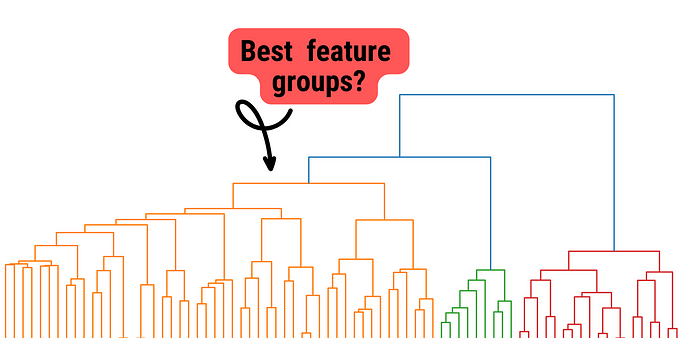Application — Corona virus tracker — Update #2
NB: This article was originally published on LinkedIn by Mark Monfort on March 16, 2020. Republished here with permission.
Intro
This week we have a few updates to the corona virus tracking app which you can access here (LINK) or on the Prosperity Advisers Insights page (LINK). Included in the weekend’s update are the following items.
- Data Update
- Growth Rate — Active Cases
- Growth Rate — Deaths
- Country Ranks — Daily Movements
- Chart changes — Growth rates
- Case Fatality Rate — updated calculation
Data update
The data has had its issues over the last week like I have mentioned on here but it does seem like the Johns Hopkins University team tracking this have it back under control. When you read their Lancet article (LINK) you can see that much of this work is still being done manually so what an immense effort on their part. Despite that, the data is being updated on a daily basis (and 1 day in arrears).
The most recent refresh showcases that Europe has become a hotbed of activity and we can see this on the app homepage. The data in the app is up to the 14th of March so looking at things 1 month ago shows that European country cases were small compared to other areas (especially China).
Add alt text
But over the course of a month we can see that so much has changed.
Growth Rate — Active Cases
I created a view of active cases that you can see in the Growth Rate menu under the sub-menu Active Cases.
In this new section you have 2 views, Grouped and by Country which you can select on the bottom right of the page.
With the grouped method you can select a region or country and it’s grouped as a singular line as you can see above. With the by Country view you can select a group of countries to compare how their growth rates compare against each other. For example, you can see that for data up to the 14th March, China’s number of active cases is less than what we see for Italy and the current trend it’s on will see it get lower than Iran and perhaps even South Korea in the next few days.
Growth Rate — Deaths
The analysis on corona virus related deaths stems from the research done by Tomas Pueyo and published last week on Medium (LINK) and which has 28 million views. In his article he looks at the rate of death across 2 separate measures. These are Deaths as a proportion of Closed cases and Deaths as a proportion of Total cases. The 1st measure he creates (Deaths/Closed) is likely to be an overestimate as deaths are likely to occur quicker than recoveries. The 2nd measure (Deaths/Total) is likely an underestimate as more cases will still be closed. Both charts will converge once all data is gathered and the final fatality rate is likely to be somewhere in the middle of these 2.
The first page for this (seen by navigating to Growth Rate on the menu then Deaths in the sub-menu) shows the combined chart.
Pueyo’s chart forecast these going forward but due to limitations with forecasts in Power BI these have to be separate charts. The forecast method used by Power BI is exponential smoothing with auto detection of seasonality. At a glance it probably needs tweaking but I’ve just run the default here and this is more out of interest than trying to predict where this will actually head.
Country Ranks — Daily Movements
Another measure that is important to look at is the daily new recordings for the 3 different case types we see recorded by Johns Hopkins university. On this page you can see the countries with the most confirmed cases, recoveries and deaths as of the latest date in the calendar selected.
Below we can see that for data up to the 14th of March, Italy had the most confirmed cases recorded at 3,500 followed by Iran at 1,400.
If we change the region to Asia & Pacific we see it changes to show that Australia had the 3rd most confirmed cases in the region that day at 50.
Chart Changes — Growth Rates
Another change from the original apps was that I was splitting up some of the charts to filter out China because there was such a large disparity when viewing bar charts and time series charts.
Charts were split up before as you can see below.
Now though, there is no need to do these splits as other countries have unfortunately caught up in case numbers.
Case Fatality Rate — Updating the calculation
Thanks to a LinkedIn post from a connection of mine and subsequent commentary, I saw that the Worldometers team actually look at the case fatality rate in more detail. The argument is that until an epidemic has ended, it is misleading to simply divide deaths by total cases. The better formula would be as follows:
CFR = deaths at day.x / cases at day.x-{T}
(where T = average time period from case confirmation to death)You can see the link to this section of their site here (LINK).
When we look at the data that others report and that I’ve also been using last week, I was using the method using current total deaths (5.82k) over current total confirmed cases (156.10) which gives a result of 3.7%.
Instead, by using a more reasonable time-frame for confirmed cases (7 days), it would be 5.82k divided by 105.82k which gives 5.5% as the case fatality rate. This app will be using this as the calculation for the case fatality rate going forward.
Is 7 days enough for a case fatality rate? It is hard to be sure unless we have more data or more test results but it’s clear that we cannot use the original measure as it isn’t a like for like comparison considering that viruses will incubate for some time. This will likely be updated in future as we get more information.
The Worldometers team also looks at another measure of limiting the sample size to being just closed cases so it would be
Case Fatality Rate = Deaths / (Deaths + Recoveries)This is something I use in the Growth Rate analysis on Deaths (mentioned earlier in this article). Currently you can see that by navigating to the Growth Rates menu and looking at the Death sub-menu. There you will Deaths/Closed cases being shown and forecast.
Closing
A lot has changed over only the last few days and it’s great to see others also looking at this data to create their own apps. I’ve still got a few more ideas of things to look at to give more interactive insights here but if anyone has some ideas on what they’d like to see then feel free to reach out to me.
Stay safe out there!








